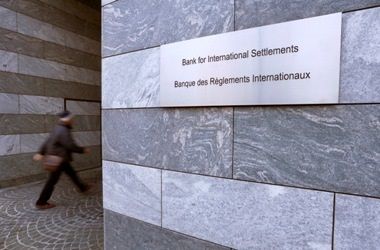The Basel Committee on Banking Supervision has suggested that banks could be holding too little capital against their trading books as a result of overly optimistic models that underestimate the amount of risk within their bond, equity, loan and derivatives books.
It is now pushing banks to overhaul the way they measure risks away from current internal value-at-risk modelling towards a more standardised expected shortfall modelling system, which could on average require banks to hold 62% more capital against their trading books.
The report was undertaken primarily to determine the feasibility of implementing such changes as part of a fundamental trading book review. Basel analysts were satisfied that this could be achieved without many problems, while also highlighting wide variations in banks’ internal models.
“They want to build a more coherent and standardised approach to risk modelling,” said Andreas Werner, a senior manager at financial and risk management consultancy d-fine. “They are determined to make it easier to compare capital levels and benchmark banks.”
The push comes just over a year after the committee identified large discrepancies in how much capital banks hold for similar assets, which led to a harsher than expected leverage ratio to offset the variation – and fundamental reviews of business models at firms such as Deutsche Bank.
VaR and ES models are not dramatically different, but the latter pays more attention to tail risks. Both use time horizons and confidence levels, but ES is considered more conservative because it focuses more on less-profitable outcomes, and less on more-profitable possibilities.
“The move from the sum of VaR and sVaR to ES typically increases the overall risk measure,” Basel analysts stated. “Assuming the same multiplier is applied to the new and old risk measures, the mean increase between the current and proposed framework for the largest diversified portfolio would be 62%.”
Hypothetical exercise
Analysts at Basel and elsewhere have said there are a number of caveats that should be attached to the 62% figure, one being that it is a hypothetical exercise, and not a perfect replica of what banks actually hold. In addition, this was based on a selection of 35 portfolios, and not every single bank in the entire global industry.
Furthermore, the final system to be used is yet to be determined, and there are a number of variables the Committee could add to the standards that could reduce the 62% figure substantially, such as pricing floors, risk weightings and how hedges are factored into models.
Nonetheless, some analysts saw this as a clear warning shot to banks. Some believe that the next phase of the exercise, which will use actual portfolio data, could reveal an even worse situation. Results of the second phase are expected to be unveiled before the end of the year.
“This exercise is based on hypothetical portfolios, rather than on real data, but it’s also been carried out using the banks’ internal models for all portfolios, whether they have been given regulatory approval or not,” said Daniel Davies, an independent consultant working for Exane BNP Paribas. “So it’s entirely possible that the actual results could be even higher … I have to see this as a shot across the bows.”
The report also highlighted the difficulties the committee faces in collecting data from the banks. It admitted that this had been the main limitation of the report, and had even had to remove the contributions of two banks due to poor data quality on “all or most of the data they reported”.
“The decision taken for this exercise has been to be rigorous with the data: where there was very strong evidence of a misunderstanding of a portfolio or an incorrect computation, data was removed,” the report read.
